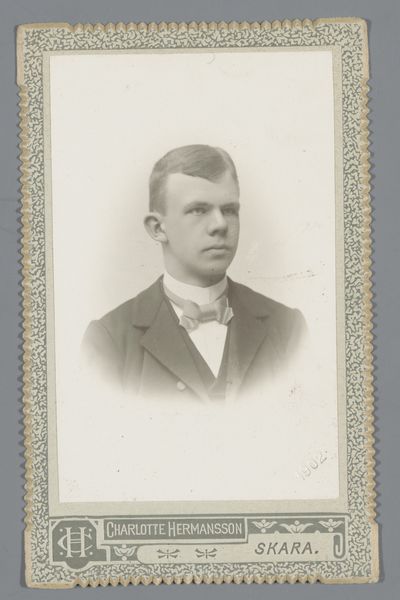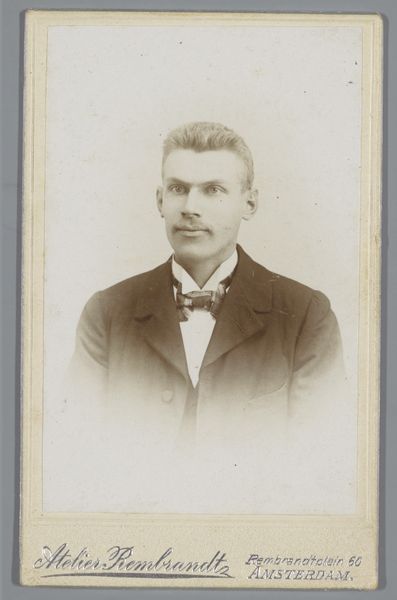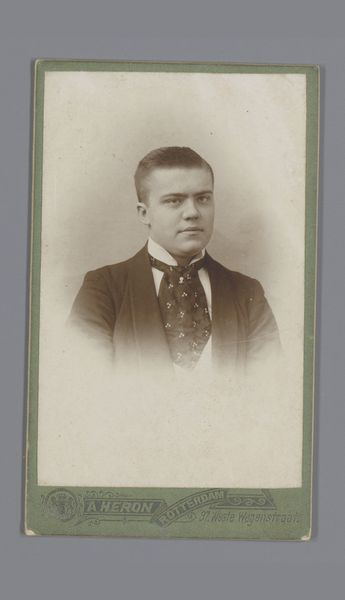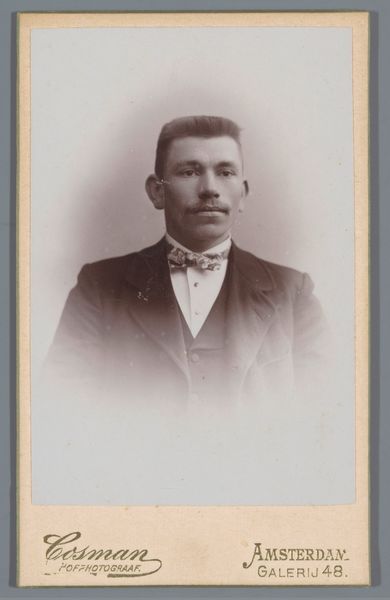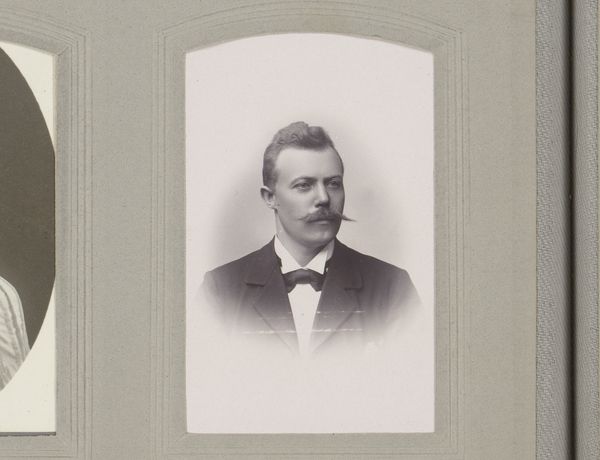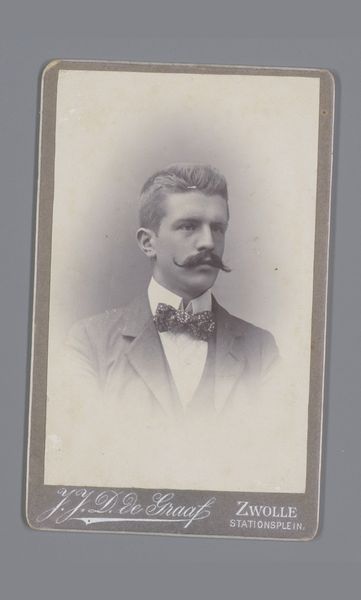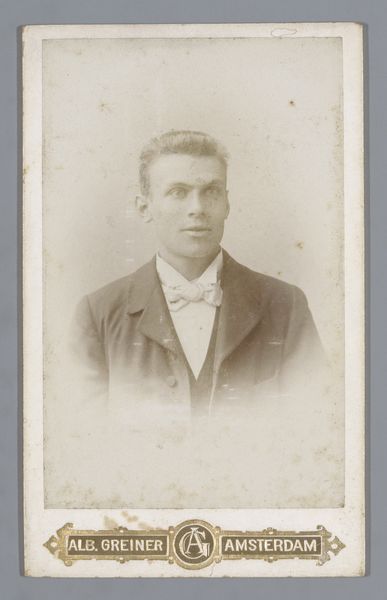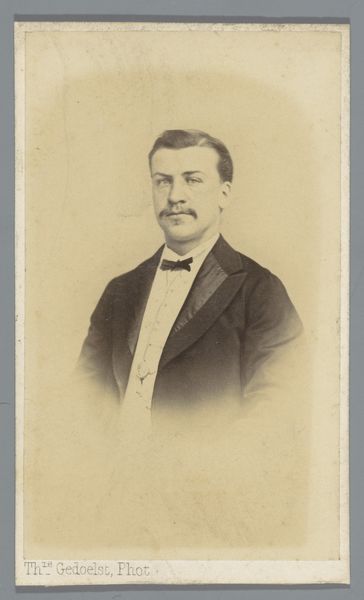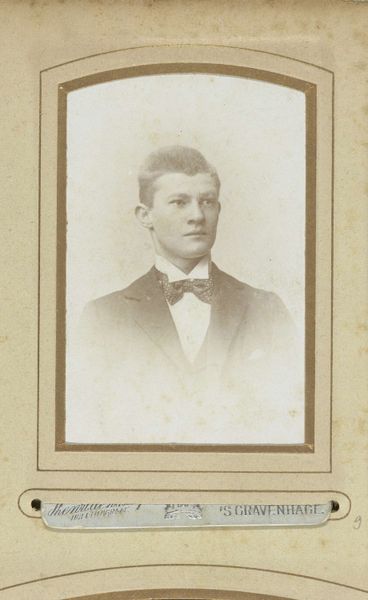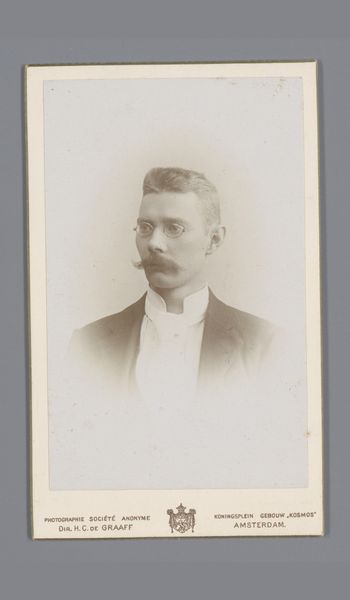
photography, albumen-print
#
portrait
#
photography
#
portrait art
#
albumen-print
#
realism
Dimensions: height 102 mm, width 63 mm
Copyright: Rijks Museum: Open Domain
Curator: This is a portrait of an unknown man from the period between 1880 and 1911. It's an albumen print by Atelier Rembrandt. Editor: There's a quiet formality to it. The sepia tones lend an old-world gravitas, and the stark pose adds to this overall serious presentation of bourgeois respectability. Curator: Yes, it adheres to a very structured composition, typical of portraiture during that era. Note the symmetrical balance, the way his face is centrally positioned. It’s about presenting an idealized, stable image. Editor: I am intrigued by his carefully chosen attire. The bow tie, in particular, and the cut of his jacket—they're signifiers of status and self-presentation in that era. Do you think he picked them out himself? Or were they props? Curator: It’s hard to say definitively, but they certainly play a role in constructing his public persona, and the use of light is worth noticing too. The chiaroscuro effect adds depth to his face and softens its features. The balance between light and dark is interesting, as it gives a softer overall impression. Editor: It humanizes the subject. The soft light also gives off a rather contemplative emotional quality, perhaps hinting at the man's inner thoughts, the burden of expectation and propriety of this period. I also see his look: somehow, though rather stern and firm, the light also brings to it the memory of classical busts, Roman statues of patricians, stoic in the face of whatever was. Curator: Photography, especially at this time, wasn’t merely a means of capturing likeness, but a curated construction, in line with Realist art trends. And beyond his face, the focus on the surface quality of the albumen print, its texture, gives us a sense of the photographic process itself. It’s about seeing the art in the photograph, a formal approach to the possibilities within the frame. Editor: Very true, very true! So this picture tells us not only of an era gone but shows the emergence of photograph, as it moved away from copying oil painting. It makes us also consider the sitter as an individual against a backdrop of social codes. Curator: Precisely. Looking at it formally, we get to uncover a larger story that shaped this portrait and its time. Editor: And through the picture's symbols, we come to better understand not only that time, but also the individual depicted, frozen as it were by a particular idea he had of himself.
Comments
No comments
Be the first to comment and join the conversation on the ultimate creative platform.
